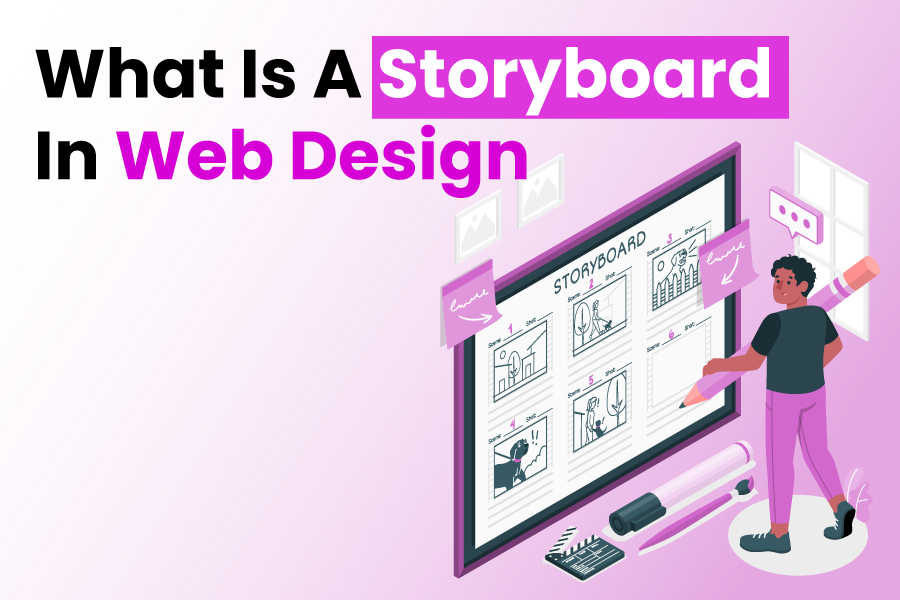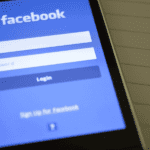We are delving into an important topic: “What is storyboard in web design.” It is an important topic that every web developer should take seriously. Professionals are seeking ways to make their tasks simpler. Web development is a complex task, so any process that will make it easier is a welcome development. Storyboard is that process. With it, you can develop your websites seamlessly. It helps web developers to streamline the web development process and create exceptional websites out of nothing. It makes the job easier for web developers while guiding them in building highly functional websites. Here, we’ll discuss what storyboard is, how it benefits web design professionals, and more. Keep reading to get more information.
What Is A Storyboard In Web Design?
A storyboard is a blueprint of a website. It’s a mockup of a website, focusing on functionality instead of text or graphics. The storyboard helps developers and clients to have a clear picture of what the website would look like when built. It ensures the clients and developers are on the same page. It also helps the clients to make the necessary suggestions or input before the final website is developed.
Website development is a tedious task. It is a time-consuming and highly technical project. However, editing a website you have finished developing can be tiring. However, you must deploy it as a website developer to boost your chances of satisfying your clients. Using a storyboard will help you avoid wasting time editing your website. With a storyboard, you can show clients how their websites will function when you finish developing them. With a clear illustration of the website’s functionality, your clients can decide if they like the websites you’re creating or want to make an input. A storyboard makes website development fast and simple. It allows clients and web developers to build websites they both want. It helps website developers and clients create unique websites with varied features that set them apart.
What A Storyboard Entails
We have defined the storyboard as the blueprint of the website. The next thing we want to unravel is what the storyboard entails. The first thing a storyboard begins with is the “Login Screen.” It defines what has to go on the screen. You’ll have a space to place the client’s company logo, sign-in box, and button for them to click to gain access to the website.
Users can find the next screen (message board) or an error when they click the button. The message board will have some basic blocks for avatars, texts, and a text field where one can provide new updates. The update appears when the user types a text in and hits the button. The storyboard is just a simple mockup process. Additionally, the stages described don’t require any concrete coding or graphics design work. If you pay close attention to the explanation, you’ll understand the major problem we just solved with this storyboard. What’s that major problem? The user experience (UX) is the most important aspect of the website design process.
The storyboard has answered the question on UX. In other words, it seeks to solve the question, “What will the website UX be? Search engines, especially Google, don’t joke with a website’s user experience. User experience is a de facto ranking factor. Therefore, a website with a good user experience would rank high. Google will consider placing the website above others that cannot match the level of UX it provides.
Make no mistake: UX isn’t the only Google ranking factor. Google considers over 200 factors when ranking a website. But the UX is important, as I have just explained. So, using a storyboard will help you solve a critical SEO process, “UX.”
Is Using A Storyboard In Web Design That Important?
You can tell from my explanation regarding storyboard that the process is important. It brings you (web designer) and your client on the same page. A lot of critical thinking and creativity goes into website design. However, the most important thing is being able to deliver a website your clients want. It’s their website and idea. Thus, your website must meet their demands.
A storyboard helps streamline a website design and layout creation. It helps website designers organize their site’s design elements, including user flow and content, before concluding the website creation. In other words, the client and the web designer will see an illustration of how the website would perform when created. Why is storyboard so relevant in the website design process? Here are some quick reasons:
1: With a storyboard, a website designer can identify critical issues in the design and solve them early when the web design is still at a preliminary stage. Editing or correcting issues after finalizing the website creation process can be a daunting task. It is like recreating the website.
2: The storyboard will give the client and website designer a clear visual roadmap detailing the design process. In other words, it would show how the website would look and function once completed.
3: The storyboard ensures the website designer, client, and stakeholders are on the same page. It facilitates collaboration and effective communication between all parties, ensuring the website is designed to taste.
4: Storyboard helps solve the question about the website UX (user experience), a de facto Google ranking factor. Google likes websites that deliver a good user experience. It wants its users to have a great time on any website on its search engine.
Do You All Website Design Require A Storyboard?
Yes, all website designs need a storyboard. Website designers, likewise their clients, need a storyboard. The site’s designer can prepare the storyboard to help the clients understand what to expect. Without a storyboard, you’re literarily keeping the client and stakeholders in the dark. Additionally, a website that you normally complete faster could take longer. It does not matter what type of website you create. Whether a complex e-commerce site or a simple blog, the storyboard is important. It will help you create a clear visual picture of the user’s journey on your website and ensure the website you eventually create functions the way it should.
Here, I provided a table showing how important using a storyboard is for your project.
| The project condition | Why you need a storyboard | |
| 1. | Are you creating a new website (blog, forum, e-commerce site, etc)? | If yes, you require a storyboard. With the help of a storyboard, you can plan the website’s structure and functionality. |
| 2. | Do you want to redesign an old website? | If yes, you require a storyboard. With a storyboard, you can identify areas of your website that require improvement and plan changes to improve them. Storyboard makes website improvement a breeze. It will ensure you improve your website to the desired level. |
| 3. | Do you want to incorporate new features into a new or existing website? | You’ll need a storyboard if that’s the case. With a storyboard, you can create a clear visual image of how your new features will fit into the existing user’s journey. You’ll better understand how the new features you’re adding will fit into the website and improve it. |
| 4. | Are you troubleshooting to discover if there’s an issue with the website’s UX? | If that’s the case, you would need a storyboard. With a storyboard, you can identify areas that need fixing and plan how to address them. |
| 5. | Are you doing minor updates on your website or making minor changes? | If the answer is yes, you need a story, depending on the gravity of the changes you’re conducting. |
Using A Storyboard In Web Design: Tips For Creating A Successful Website
We have defined the meaning of storyboarding and its importance for website design. Using a storyboard can help you create your dream website. And as a web designer, it will help ensure client satisfaction. Your clients will give you good reviews and ratings when you create a website that meets their needs. They’ll rate your work highly and would easily recommend you to other prospects on their contact list.
Here are a few tips about creating a successful website. These are the few things that can make or break a website.
1: User experience:
User experience is an important aspect of any website. It involves how easily visitors can access and navigate a website. It deals with how simple it is for visitors to visit a website and gain access to the information they seek. So, consider your site’s user experience. Focus on users’ preferences when creating the site. Furthermore, ensure your site is accessible to all. The information on your site should be clear for everyone to understand, too. The information on your site should be concise and clear.
2: Don’t be afraid to repeat a process:
Iteration is the keyword. Never be afraid to iterate as a web designer. Why am I saying this? Your first storyboard might have some mistakes. It might not be as perfect as you want. But that shouldn’t deter you. If you discover any mistakes in your storyboard, correct them and keep going. You’re creating a website, which follows a process. Therefore, it’s possible to make mistakes. But then, when you make mistakes, don’t beat yourself up. Identify the mistakes and make the necessary adjustments.
3: Test the design:
After creating the storyboard and the site, testing is another phase to consider. Use a real user to test the website you have built. The reason for testing a website with a real user is to help you identify issues in the site and make the necessary adjustments.
How To Create A Storyboard In Web Design
You need to consider several things when creating a storyboard for a website. Let’s discuss the various procedures to follow.
1: The main theme:
Your website development should be centered on the theme. In other words, build the website around the “main theme.” Your main theme should be clear in the entire design.
2: Your target audience:
Who are your potential visitors? Consider them before creating your website. Tailor your website design, content, and other elements to your target audience’s interests and needs. Design a website they’ll be happy to revisit repeatedly.
3: User persona and journey:
Now that you have a clear idea of your target audience, user persona and journey are the next things to focus on. Understand your users at a deeper level. Know their behaviors, psychology, and demography. Proper research of your target audience will be required to unravel the user persona. Learn all you need to know about your target audience to create a website that meets their needs.
4: Create the sitemap:
Sitemap is crucial to your storyboard, including the website design process. It’s an outline of every single page available on your website. It shows how the website’s sub-category pages are broken down. Get a well-detailed sitemap to build a functional website. So, spend a good amount of time on this category. Create an effective sitemap. It should be a clear reflection of what you want. That way, you can build a website that meets your goal.
5: Wireframe the website:
Wireframe comprises the website detail in black and white. It discusses everything about the website, from the content to sections and how the pages will interact. Note that the wireframe doesn’t include content detail. Instead, it provides an overview of the entire structure of the website. It helps you determine the visual arrangement of the website, including page layout. Wireframing a website involves drawing the website’s skeletal blueprint. It lets you focus on the website’s visual layout, skipping detailed content. Most web designers may skip wireframing and jump straight into the storyboard design once they have the sitemap. But the thing is, every process is important in website design. So, there’s no point skipping your site’s wireframing.
6: Define content and functionality:
We’re referring to content as text, images, forms, videos, etc. It is an important aspect of your website design that can impact your conversion rate. So, you need to do it carefully. Avoid any errors. Assign the content to all the pages and sections, and assign the content’s functionality too.
7: Design element definition and branding:
This point is where you introduce the primary color to your website. It is important as it involves the company branding that would use the website. Ensure that the design elements and website goals match perfectly. Your website should be visually appealing. Incorporate the company’s branding into the website properly. Remember, you can create a lasting impact on your users via the website branding.
8: Test the website and iterate:
After the storyboard creation, website testing should be the next thing on your mind. However, the target audience should be allowed to do the testing. Look for people you believe are your target audience. Ask them to check out the product and provide an honest review. From their feedback, you can identify areas of the site that require improvement and work on them.
Conclusion
What is a storyboard in web design? The storyboard is an important part of the website design process. It makes website design a breeze for professionals. A storyboard is a mockup of a website. It is more like the blueprint of the website. It helps ensure clients and web designers are on the same page. However, storyboard focuses on the functionality of the website rather than the text or visual appeal. It also addresses key aspects of the website, such as user experience, a de facto Google ranking factor. So, create a site with a great user experience.



